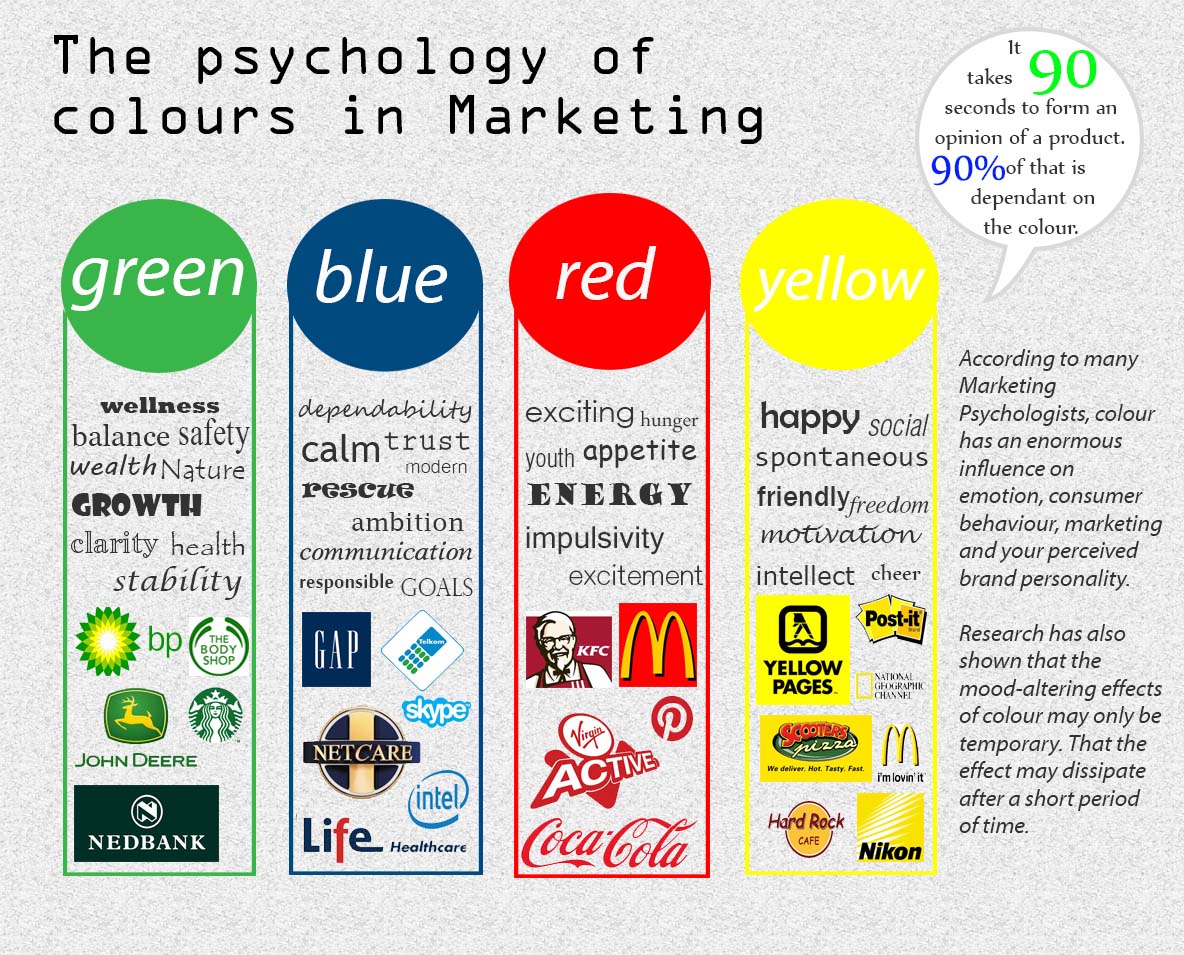The influence colour has on a person’s emotions and perceptions have always been a fascination of mine. According to many Marketing Psychologists, colour has an enormous influence on emotion, consumer behaviour, marketing and your perceived brand personality. Whether you are creating a logo, designing a new website or simply choosing what your company’s corporate colours are, the colours you choose would ultimately determine how the public feels about your brand or company.
According to research conducted by Seoul International Colour Expo, it takes 90 seconds for people to form an opinion on a product and 90 percent of that can be determined by the colours used in the product.
Imagine if McDonald's was blue and green?


It looks very unappetising and it just doesn’t have the same playful, happy feeling it was designed to have with the red and yellow logo. Yellow is a happy, friendly, spontaneous colour and the red compliments it by triggering stimulation, appetite, hunger and impulsivity. In fact, most fast food companies have red or yellow themed brands for exactly this reason.

Also imagine if you were to look for neurologists and their website was bright pink and purple? They would have a real challenge convincing people they are a professional institution. Those colours would be inappropriate for the medical industry. Medical firms or practitioners often use the blues or darker shade greens. The reason for this is that the colour blue creates a feeling of calm, trust and dependability. Green emits an aura of wellness, health and wealth.
There are of course those that view colour psychology with skepticism and think that the effects colour has on emotion is exaggerated. The fact is that there is no exact science behind colour perception. The impact of any given colour can vary depending on individual perception, gender or cultural background. For instance, in Egypt Yellow is the colour of mourning, but for most people yellow is a happy colour, whereas in China, yellow represents honor and royalty.
Research has also shown that the mood-altering effects of colour may only be temporary. A red room may initially cause feelings of increased appetite or raise your energy level, but the effect dissipates after a short period of time.
Below is an infographic of how colours affect us according to most recent reasearch.

I think that colour definitely influences how we perceive a brand, product or company. What is your opinion?
Lorraine Coetzee is a Digital Media Project Manager at Sound Idea Digital | Email: Lorraine@soundidea.co.za | Twitter: @SoundIdea
[Back]
blog comments powered by Disqus
